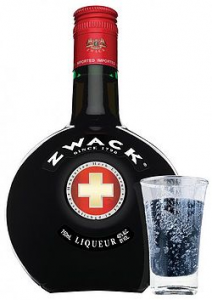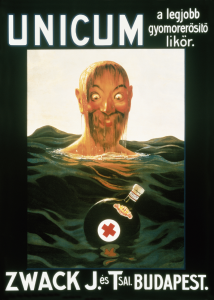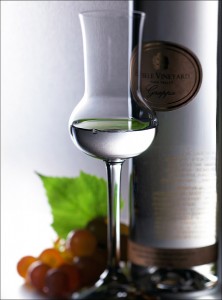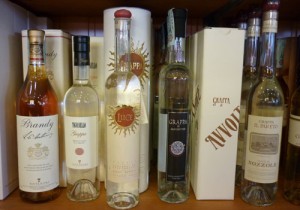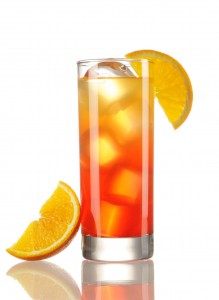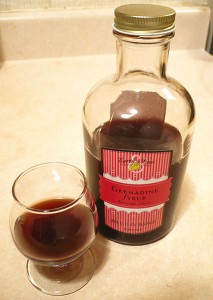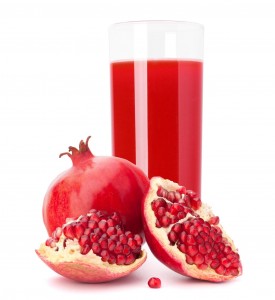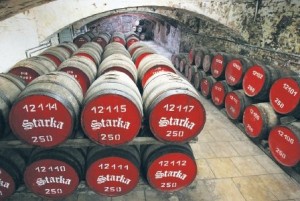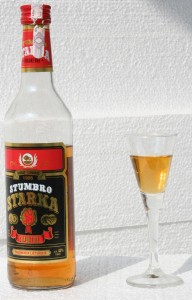 Chartreuse is a spirit with a long and fascinating history. The story begins in 1605, when the monks of the Vauvert Monastery, a branch of the Carthusian Order located in a suburb of Paris, were given an ancient document by Hannibal d’Estrées, a Marshall of King Henri IV. The manuscript was a formula for an “Elixir of Long Life,” most likely the work of a 16th century alchemist with a great knowledge of herbs and plants in the treatment of illness.
Chartreuse is a spirit with a long and fascinating history. The story begins in 1605, when the monks of the Vauvert Monastery, a branch of the Carthusian Order located in a suburb of Paris, were given an ancient document by Hannibal d’Estrées, a Marshall of King Henri IV. The manuscript was a formula for an “Elixir of Long Life,” most likely the work of a 16th century alchemist with a great knowledge of herbs and plants in the treatment of illness.
The formula, containing over 130 ingredients, was so complex that it was never fully used by the monks at the Vauvert Monastery. However, in the early 1700’s, the monks sent the manuscript to the Grande Chartreuse – the head monastery of the Carthusian Order. The apothecary for the Grand Chartreuse undertook an exhaustive study of the formula and, by 1737, had unraveled the mystery and designed a practical formula for the preparation of the elixir.
The monks began production of the formula, which was sold in the town of Grenoble and other villages located close to the Grande Chartreuse Monastery. The elixir had a natural, clear green color, and from the fame of the liqueur, the color became known as “chartreuse.” Today, Chartreuse still bills itself as “the only liqueur to have a color named after it.”
The monks protected their secret recipe throughout the centuries, including the tumultuous time surrounding the French Revolution when all religious orders were  expelled from France. The Chartreuse monks left France in 1793, but one monk remained behind with a copy of the original manuscript. Another monk secretly retained the original; shortly after leaving The Grand Chartreuse Monastery he was arrested and sent to prison in Bordeaux. However, he was not searched and eventually passed the original document to a friend, Dom Basile Nantas. Dom Basile was convinced the Monks of the Grand Chartreuse would never return to France, so he sold the recipe to Monsier Liotard, a pharmacist in Grenoble. The pharmacist, however, never attempted to produce the elixir. When Monsieur Liotard died, his heirs returned the manuscript to the Chartreuse Monks.
expelled from France. The Chartreuse monks left France in 1793, but one monk remained behind with a copy of the original manuscript. Another monk secretly retained the original; shortly after leaving The Grand Chartreuse Monastery he was arrested and sent to prison in Bordeaux. However, he was not searched and eventually passed the original document to a friend, Dom Basile Nantas. Dom Basile was convinced the Monks of the Grand Chartreuse would never return to France, so he sold the recipe to Monsier Liotard, a pharmacist in Grenoble. The pharmacist, however, never attempted to produce the elixir. When Monsieur Liotard died, his heirs returned the manuscript to the Chartreuse Monks.
The Monks of Chartreuse were allowed to return to their Monastery in 1816, and resumed the production of their Chartreuse elixir. In 1838, they introduced a sweeter version of “Yellow Chartreuse” flavored with saffron.
In 1903, the French government expelled the Monks once again, and the Chartreuse distillery was nationalized. The Monks fled to Spain and built a new distillery in Tarragona where they produced a liqueur they called “Une Tarragone.”
In the years following the nationalization of the distillery and Monastery, the French government sold the Chartreuse brand and trademark to a company who set up an operation known as the “Compagnie Fermière de la Grande Chartreuse.” The company went bankrupt in 1929. Upon the announcement of the bankruptcy, friends of the monks  purchased the remaining shares and gifted them back to the Monastery.
purchased the remaining shares and gifted them back to the Monastery.
After regaining ownership of their brand and trademark, the Monks returned to their distillery located in Fourvoirie, not far from their original Monastery, and resumed production of authentic Chartreuse liqueurs. When, in 1935, the Fourvoirie distillery was severely damaged by a landslide, the Monks moved to Voiron, where the production facility still exists today.
The selection and preparation of the “secret” blend of over 130 herbs is still done today in the Monastery. Once prepared, the ingredients are taken to the production facility in Voiron where they are macerated, distilled, and aged in oak casks for several years. In addition to “Green Chartreuse” and “Yellow Chartreuse,” a special bottling known as V.E.P. Chartreuse (“Viellissement Exceptionnellement Prolongé”) is produced. V.E.P. is aged longer than the other two products, and is packaged in a reproduction of the bottles used in 1840. Each bottle of V.E.P. is individually numbered, sealed with wax and presented in a wooden box.
Since 1970, a company known as “Chartreuse Diffusion” handles the packaging, marketing, and distribution of Chartreuse products. However, the Carthusian brothers still prepare and produce the liqueur, and to this day, remain the only people who know the secret formula for their “Elixir of Long Life.”
For more information, visit the Chartreuse Website.
Click here to return to the SWE Website.
